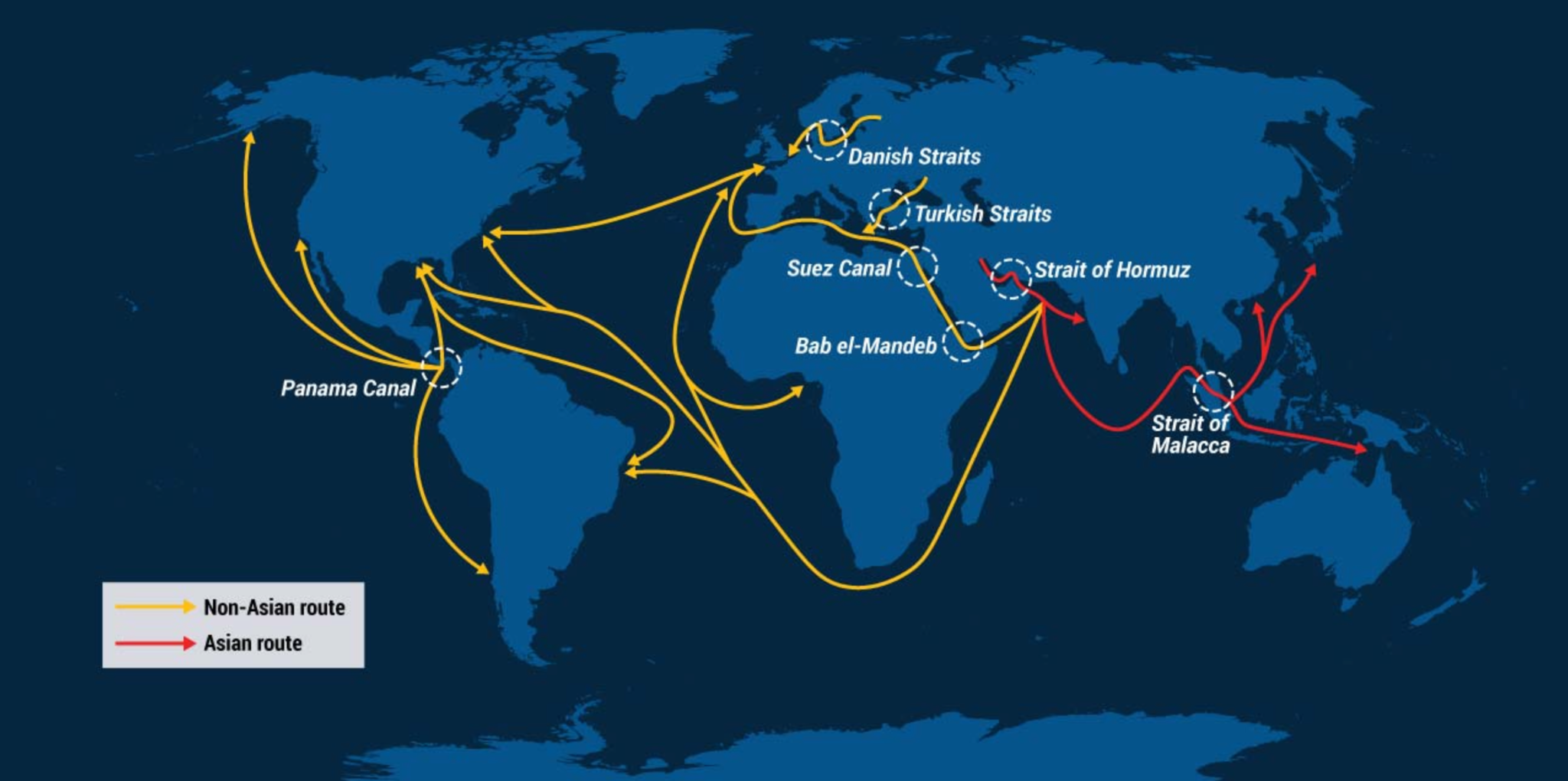How two choke points could turn into a perfect storm for global trade (Indian Express)

- 01 Jan 2024
Why is it in the News?
Shipping giant Maersk on Sunday suspended passage of its vessels through the Red Sea route for 48 hours after fresh attacks by Yemen-based Houthi rebels. This comes barely a week after the company announced plans to resume operation citing the deployment of a US-led military operation to guard the crucial sea route.
What do the ongoing Red Sea and Panama Canal crises mean for world trade?
- A disruption in maritime transport is a crucial concern for the world economy, as over 80 per cent of the global goods trade is carried by sea.
- The share of trade via sea is much higher for developing countries such as India.
- Currently, two important shipping routes are facing blockages.
- Bab-el-Mandeb Strait which leads to the Suez Canal in the Red Sea region connects Asia and parts of North East and East Africa to Europe.
- The 100-year-old Panama Canal connects the Atlantic and Pacific Oceans.
- Both these routes are among the busiest in the world and a blockage results in forcing global shipping lines to take longer alternate routes, pushing up freight rates.
- The disruption at the Red Sea route, for instance, is estimated to push the prices of Indian agricultural products by 10 to 20 per cent, as shipments would be routed around Africa via the Cape of Good Hope.
- This comes at a time when much of the West is witnessing higher interest rates to curb inflation.
- Higher prices could further fuel demand concerns for global and Indian exporters.
Why is trade via the Panama Canal slowing?
- Shipping via the Panama Canal has dropped by over 50 per cent due to drought conditions at the 51-mile stretch.
- Due to the shortage of water, ships moving from Asia to the US are being forced to use the Suez Canal, which takes six more days compared to the Panama Canal.
- Moreover, Panama is facing its driest rainy season in decades, raising fears of prolonged canal bottlenecks.
How have the attacks impacted freight rates?
- Ever since the attacks along the Bab-el-Mandeb Strait began, global shipping firms have begun imposing war risk surcharges over and above the normal freight rates.
- Indian exporters said that freight rates for Indian shipments headed to Europe and Africa could surge as much as 25-30 per cent if the ongoing security concern along the Red Sea trade route continues.
- This is troubling, as the European Union is one of India’s second-largest export destinations.
- Slowing demand from the region has impacted India’s labour-intensive sectors, such as textiles, gems and jewellery exports.
Panama Canal
- It is an artificial canal that spans the Isthmus of Panama and links the Atlantic and Pacific oceans.
- Together with the Suez Canal, it is one of the two most strategically important man-made waterways in the world.
- It has a length of around 80 kilometres.
- The United States constructed the canal between 1904 and 1914, and on August 15, 1914, it was formally inaugurated.
- Since 1999, when control of the Canal was moved from the United States to Panama, it has been owned and operated by the Republic of Panama.
- To make it easier for ships to cross the continental divide, the Panama Canal is made up of a network of locks that raise and decrease the water level.
